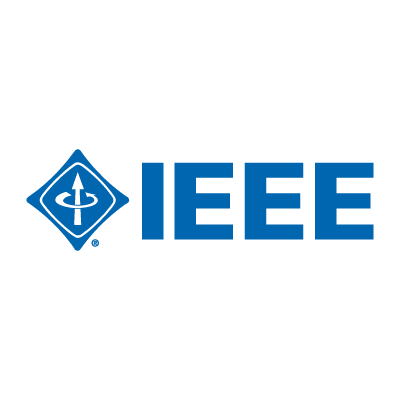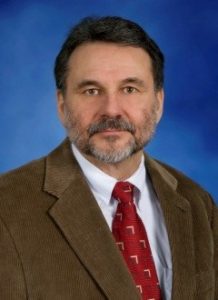
2019 IEEE International Symposium on Phased Array Systems and Technology
October 15 – 18, 2019, Waltham, MA USA

Tutorial: Phased Array Measurements
October 15, 2019 8 A.M. – 12 noon
Instructors:
Dr. Alan Fenn, MIT Lincoln Laboratory
Dr. Charles Kryzak, Alion Science and Technology
Mr. Alexander Morris, MIT Lincoln Laboratory
Overview: Accurate characterization of RF phased array antenna systems, typically in an indoor anechoic chamber environment, is desired prior to field deployment for communications, radar, and sensing applications. This tutorial reviews various measurement techniques applied to analog and digital phased array antennas for determining the far-field radiation patterns and for element diagnostics and array phase and amplitude alignment. Theory behind the methods and examples of measurements of antenna arrays using the following techniques will be discussed:
- Planar near-field
- Cylindrical near-field
- Spherical near-field
- Compact range and far-field
- Focused near-field adaptive array
Other phased array measurement topics including array mutual coupling, scan reflection coefficient, element gain, ultrawideband arrays, and on-platform measurements will be presented.
Attendees will receive the following tutorial materials:
Book: Dr. A.J. Fenn, Electromagnetics and Antenna Technology, Artech, 2018.
Electronic copy: Tutorial presentation slides
Part 1: Phased Array Antenna Measurements Using Near-Field Techniques
Dr. Alan J. Fenn, MIT Lincoln Laboratory, USA
This tutorial provides an overview of phased array antenna measurements, with an emphasis on near-field measurement techniques. Lincoln Laboratory’s new Large Planar Near-Field Scanning Facility for phased array measurements will be briefly reviewed.
Outline:
- Introduction / background
- Basic array parameters
- Array mutual coupling
- Scan reflection coefficient
- Element gain
- Phased array antenna measurement techniques
- Introduction
- Measurement Techniques
- Far-field
- Compact range
- Focused near-field range
- Near-field scanning (planar, cylindrical, spherical)
- Planar near-field scanning for low-sidelobe arrays
- Theory
- Results
- Summary
- Adaptive array focused near-field testing
- Comparison of far-field and near-field interference
- Focused near-field adaptive nulling test concept and simulations
- Adaptive phased array test bed and measurements
Part 2: A Spherical Near Field Facility to Support Calibration of Analog and Digital Array Antennas and Verification of System Performance
Dr. Charles Kryzak, Technology Director/Principle RF Engineer, Weapons Systems and Sensors Division, Alion Science and Technology, USA
Abstract: The development of independent digitally controlled transmitter and receiver phased array channel architectures has driven Lockheed-Martin (LM) to address the difficult aspect of array-level channel balancing and equalization. To support this development, LM-Ground Based Radar Division designed and constructed a very large Spherical Near-field Anechoic Chamber facility at its Syracuse, NY location.
The choice of spherical near-field scanning was made to enable the measurement of far sidelobes and direct backlobes of the radar antenna pattern. The anechoic chamber RF shielding is rated up through 18 GHz and the RF absorber is rated from the lower UHF through 40 GHz. The chamber absorber and HVAC system are designed to sustain average incident power levels in excess of 1500 Watts/sq-meter, allowing for operation of the antenna at high peak levels.
The electronic data acquisition system was designed to address the testing of phased array systems with a variety of architectures: either analog-controlled or fully-independent digitally controlled transmit functions plus digital I/Q channelized receive functions. To establish accurate pair-wise channel amplitude and phase mismatch, careful attention has been paid to transmit and receive “real-time” pulse I/Q characterization, together with receive channel amplitude and phase ripple equalization.
Techniques have been developed which address the more difficult test requirements dictated by independent “distributed” waveform generation which are driven by the subtle stable reference receiver-function required to remove residual measurement phase drift.
Part 3: Multifunction Phased Array Radar Antenna Near-Field Measurements
Alexander F. Morris, MIT Lincoln Laboratory, USA
The Multi-function Phased Array Radar Advanced Technology Demonstrator (MPAR-ATD) is a 4864-element, S-band, dual-polarization phased array radar. The antenna features a low-cost, panel-based tile architecture that has been developed over the past 10 years through a collaboration between Lincoln Laboratory and MACOM technologies. The MPAR-ATD antenna was constructed and underwent 8 months of testing at Lincoln Laboratory’s Large Planar Near-Field Scanning Facility. Testing was completed in May 2018, and the system was deployed to Norman, Oklahoma, USA where it will serve as the primary asset for the National Severe Storms Laboratory (NSSL) in the research of dual-polarization phased array weather radar techniques.
This tutorial will provide an overview of the MPAR-ATD system, describe the near-field measurement techniques that were used in testing, and present measurement results.
Outline:
- Introduction / background
- S-band Multifunction Phased Array Radar (MPAR) system characteristics
- Near-field techniques for phased array calibration
- Element-wise amplitude and phase alignment
- Considerations for overlapped-subarray phased array architectures
- Planar near-field measurements
- Test plan and scan parameters
- Measured antenna performance
- Practical considerations
- Summary

Dr. Alan Fenn is a senior staff member in the RF Technology Group at Lincoln Laboratory, Massachusetts Institute of Technology. He has conducted extensive research in the area of phased array antennas. He joined Lincoln Laboratory in 1981 and was a member of the Space Radar Technology Group from 1982 to 1991, where his primary research was in adaptive phased-array antenna design and testing. From 1992 to 1999 he was an assistant group leader in the Radio Frequency Technology Group where he managed programs involving RF measurements of atmospheric effects on satellite communications. From 1978 to 1981, he was a senior engineer in the Antenna Systems and Design/Analysis Group in the RF Systems Department at Martin Marietta Aerospace, Denver, Colorado. He received a B.S. from the University of Illinois at Chicago, and an M.S. and Ph.D. from The Ohio State University, Columbus, all in electrical engineering. Dr. Fenn was elected a Fellow of the IEEE in 2000 for his contributions to the theory and practice of adaptive phased-array antennas. He is currently serving as the Technical Program Chair of the 2019 IEEE International Symposium on Phased Array Systems & Technology. He was technical co-chair of the 2018 IEEE Antennas and Propagation Society Symposium. He has served as an associate editor in the area of adaptive antennas for the IEEE Transactions on Antennas and Propagation. He was a co-recipient of the 2016 IEEE Aerospace Conference M. Charles Fogg Best Paper Award. In 1990 he was a co-recipient of the IEEE Antennas and Propagation Society’s H.A. Wheeler Applications Prize Paper Award. He also received the IEEE/URSI-sponsored 1994 International Symposium on Antennas (JINA 94) Award. Dr. Fenn has authored the book Adaptive Antennas and Phased Arrays for Radar and Communications as well as four other books and numerous journal articles, patents, and short-course lectures and conference presentations on phased array antennas.

Dr. Chuck Kryzak retired 2015 Lockheed Martin Fellow and Hardware-Systems Architect under Ground Base Radar Systems in Syracuse, NY, and subsequently accepted a position as Technology Director/Principle RF Engineer with the Weapons Systems and Sensors Division of Alion Science and Technology in Rome NY. He received a Ph.D. in Physics from RPI, Troy, NY and jointly served as Research Assistant under the EE department.
As Alion’s RF Systems PI he developed /delivered DSP techniques in waveform detection, pulsed/CW signal re-construction, and coherent noise reduction completing detailed performance characterization of ONR’s 40GHz RF sampler. He designed the ESA aperture, developed 8-bit “256-state” TTD Beam Former specification and control , and was lead test engineer working with technology partner GE GRD, Niskayuna, NY for the joint Army/AFRL/GE CRD/ Alion USSOCOM SOF Deployable Ku-band VSAT Electronically Steerable Array (ESA) “Communications on the Move” (COTM) initiative. As Technology Director he is systems PI for Alion’s adaptive spectrum selective RF jammer, and their Foliage Penetrating Radar development which includes polarimetric target discrimination, > 500MHz IBW, neural network based adaptive beam forming and multi-target tracking: insertions include autonomous UAV detection and threat mitigation, and remote occluded personnel surveillance.
While at Lockheed Martin, he lead the Surveillance Radar (SR) antenna aperture design for the Tri-National “US Army’s” MEADS SR/MFCR Missile Defense System, and he designed and developed the associated RF radar timing, and digital control/data distribution networks for both SR and MFCR. He developed high resolution SR radiating element models, and 3D EM simulated the full SR phased array using a combination of FEM and FDTD techniques in order to verify/optimized SR array front-side/back-side beam and null generation performance capabilities, and margins, against program mission requirements. As LM antenna test lead, he developed all array Near-Field calibration procedures, and personally verified phased array element and fractional array beam performance measurements for LM’s Space Fence, AMDR, SEWIP High Band Array, MEADS SR, NOAA PAR aperture, and assisted Syracuse Research Corp’s LCMR update. He was directly responsible for all of LM Syracuse’s Spherical Near-Field chamber performance specification and chamber development. He designed, developed, and reduced to full production the fully ruggedized Quad-Channel Optic Transceivers which are architecture and production baselines for the entire tactical avionic digital distribution networks within the Joint Strike Fighter (JSF) and F-16 Block60 aircraft. He has subsequently delivered an invited short paper “Optical Component/Hardware Insertion in to Tactical/Sensor Systems: Risks and Lessons Learned” at the IEEE 2011 Avionics, Fiber-Optics and Photonics Conference, San Diego, CA. He is a member of Sigma Xi, IEEE, the American Physical Society, and has ten patents and publications related to optical array transceiver design, MMIC wafer processing, and non-blocking computer network switching architectures.

Mr. Alex Morris is an associate technical staff member in the RF Technology Group at Lincoln Laboratory, Massachusetts Institute of Technology. He received B.S. and M.S. degrees in electrical engineering from the University of Alaska, Fairbanks. Since joining Lincoln Laboratory in 2014, he has been working on the development, design, and measurements of phased array antennas. He has been responsible for developing calibration and near-field measurements procedures for a low-cost panel-based S-band Multifunction Phased Array Radar (MPAR) system, which is currently being evaluated as an Advanced Technology Demonstrator (ATD) at the National Weather Radar Testbed (NWRT) at the National Severe Storm Laboratory (NSSL) in Norman Oklahoma. He is a co-author of the paper “Multifunction phased array radar advanced technology demonstrator nearfield test results” presented at the 2018 IEEE Radar Conference.